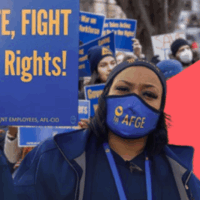Now that New York, California and more than 15 cities are phasing their minimum wages up to $15 an hour, new and conflicting studies out of Seattle — the first big city to approve a $15 wage — are sparking new debate.
Opponents are touting a University of Washington working paper that purports to find that Seattle’s wage increase is hurting workers more than it’s helping them. The other study, by researchers at the University of California at Berkeley, examined Seattle’s restaurant industry — its largest low-paying sector, where any adverse impact would be apparent — and found that, so far, the minimum wage has led to no discernible job losses and delivered significant raises.
Experts have cited serious problems with the UW study that the authors admit they “worry” about. But their attempts to address them raise more questions than they answer.
The UW study focuses chiefly on workers earning under $19 an hour — the pay range most affected by the minimum wage. But it’s complicated by the fact that Seattle was simultaneously seeing tremendous wage growth driven by its booming economy and record-low unemployment. That wage growth was itself reducing the number of jobs that pay less than $19, as workers received raises to above that level.
The UW study therefore needed a control group experiencing the same rapid wage growth, in order not to erroneously count workers who got raises to above $19 as lost jobs blamed on the minimum wage. To do this, they constructed a “synthetic Seattle” using labor market data from other counties in Washington State. But the catch is that the Washington suburbs and small towns the UW team used have not been experiencing the same explosive wage and job growth as Seattle. That badly skewed their findings.
The UW team acknowledges this problem, but argues that because the reduction in jobs paying under $19 started in early 2016, right when the minimum wage rose from $11 to $13, they believe the wage hike, not general wage growth, is more likely to blame. But independent analysis shows that it was precisely then in early 2016 that Seattle’s red-hot job market caused wages to take off and diverge dramatically from those in the rest of the state.
The fact that the UW analysis produces other nonsensical results confirms these serious problems with its control group. These include findings that Seattle’s minimum wage has (implausibly) generated large job and hours increases for workers earning above $30 an hour; and conversely that there has been no spike in the number of workers earning right around the new minimum wage — something every other minimum-wage study finds.
Compounding the control group problem is what the UW study left out: the 40% of the Seattle workforce at multi-site businesses like McDonald’s and Starbucks. That’s a significant and distorting omission, since the Seattle ordinance requires larger businesses to pay higher wages, and workers were likely leaving smaller businesses in pursuit of higher pay. The UW study erroneously counts such workers who moved to larger companies as a “lost job” instead of a raise.
To try to rule out the possibility that jobs have been shifting to the larger companies they left out, the UW team points to a survey they conducted in which large businesses reported that they were likely to cut jobs in response to the wage hike. But experience shows that when employers are surveyed on worker-friendly policies like the minimum wage, they tend to overstate their likelihood of making cuts.
Because of its many errors, the UW study finds the biggest negative effects on jobs in the history of minimum wage research — implying that four out of every five workers getting raises lost their jobs. These findings are way out of line with most high-quality minimum wage research, which has found small to negligible adverse impacts. The UW findings strain credulity — especially since the Seattle increases studied (just $10.50 to $13.00 as of 2016 depending on firm size) were not that big for a city with median wages as high as Seattle’s.
On the ground in Seattle, unemployment has reached historic lows, pay is rising at every income level and there are more employers than at any time in the city’s history. Workers report they are earning more and not seeing jobs or hours cut. By all real-world measures, Seattle’s $15 minimum wage is working.
Sonn is general counsel and program director at the National Employment Law Project.
This op-ed was originally published in the New York Daily News.



